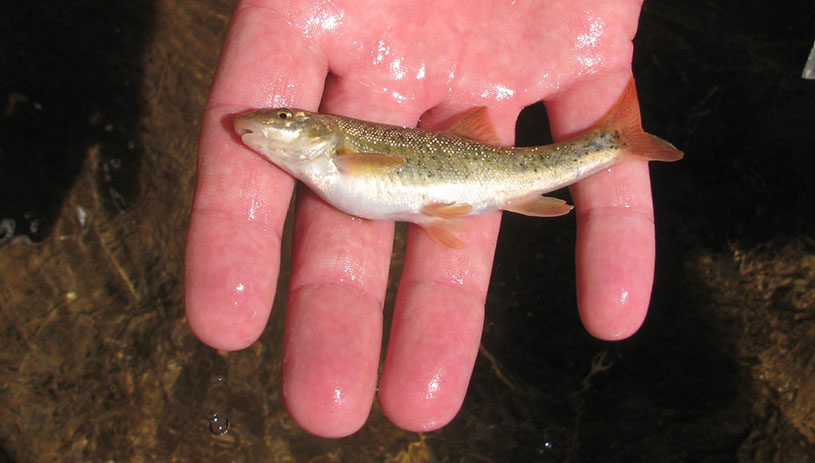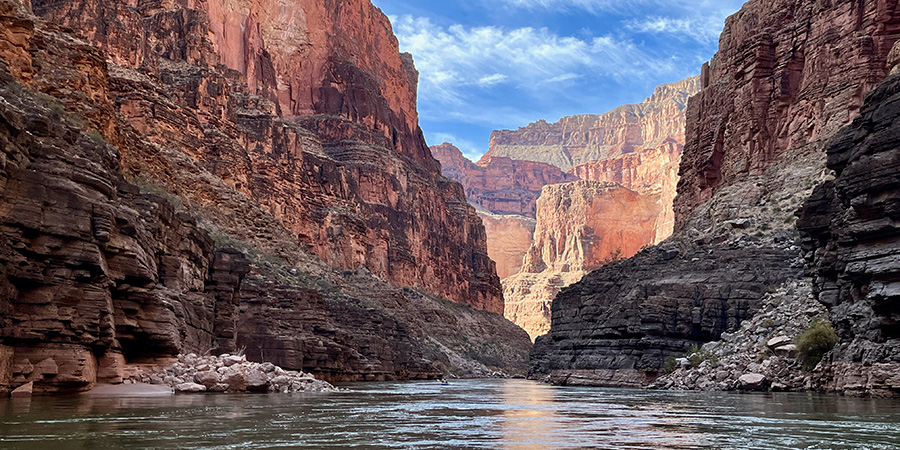
Challenging conditions have endangered, threatened, or imperiled these five native fish in the Grand Canyon.
The Grand Canyon, a mile-deep chasm walled by steep cliffs, scorching in summer and chilly in winter, is a challenging place to be a fish. Historically, native fish in the Colorado River navigated big spring floods, near-freezing winter temperatures, and trickling ribbons of water during dry spells. The Colorado River’s turbulent flows were so full of sediment that these unique fish had to gobble their meals sight unseen.
Today, bracketed by dams upstream and downstream, the Colorado River doesn’t flow like it did in the past. Most of the year, the Colorado River in the Grand Canyon is cool and clear, and dams block any chance of fish swimming elsewhere.
Native fish of the Grand Canyon
Eight fish are native to the Grand Canyon, but only five are still found in the canyon today.
Flannelmouth sucker

With a golden back and creamy-white belly, the flannelmouth sucker is a hardy desert dweller found throughout the Grand Canyon. It has a downward-facing mouth that acts like a vacuum, sucking up things to eat from the bottom of the river. This large fish may grow over two feet in length and live longer than 30 years.
Typically, flannelmouth suckers hang out in pools and deep waters of the mainstem Colorado River. However, they move into the Paria River, Little Colorado River, Bright Angel Creek, and Havasu Creek to spawn in the springtime.
Bluehead sucker

The sleek, torpedo-shaped bluehead sucker is found in rocky, fast-moving waters of the Colorado River in the Grand Canyon. Smaller than the flannelmouth, the species grows to about 20 inches long. It has a distinctive smooth, dusty-blue head with a green-blue body. A half-moon shaped bony plate on its lip helps it scrape algae and tiny aquatic invertebrates off rocks on the river bottom.
Razorback sucker

Boasting a bony keel behind its head, the endangered razorback sucker is the largest sucker in the Colorado River, reaching lengths of 36 inches over lifespans of 40 years or more. Razorback suckers are a dark olive-green with a yellow belly and — like the other sucker species — have mouths specially designed to feed on insects and plant material from the bottom of the river channel.
Humpback chub

This silvery minnow with the distinctive hump on its back has hung on despite the odds in the Grand Canyon. The jury is still out on whether the pronounced hump helps the chub avoid being eaten or helps it to navigate whitewater. Either way, cooler waters pulled from deep within Lake Powell and released below Glen Canyon Dam have not helped the humpback chub.
A large population of humpback chub is found near the confluence of the Colorado and Little Colorado rivers, where the water is warm enough for spawning adults and for young fish to grow. Humpback chub are also found in the western Grand Canyon, as waters warm farther downstream. Grand Canyon National Park has also successfully moved humpback chub, establishing a population in Havasu Creek.
Speckled dace

This olive-green, mottled little minnow is abundant in the Grand Canyon, residing in shallow waters where it can feed on tiny bugs and algae. The fish only grows a few inches in length and lives for two or three years. A black band wraps around the speckled dace’s face, and males rock brilliant red “lipstick” around their mouths during spawning season.
Changing habitat and what it means for Grand Canyon fish
Over millennia, this collection of native fish has learned to live in the Grand Canyon. But changing habitat, loss of spawning migration routes, and the rise of invasive fish like the voracious smallmouth bass and green sunfish, now pose a challenge.
Three native fish species — the Colorado pikeminnow, bonytail chub, and roundtail chub — are no longer found in the Grand Canyon at all. The native fish that remain are endangered, threatened, or imperiled. Experimenting with high-flows, removing invasive fish, and establishing new populations of native fish are some of the ways scientists and water managers aim to help these persistent Grand Canyon fish swim on.




